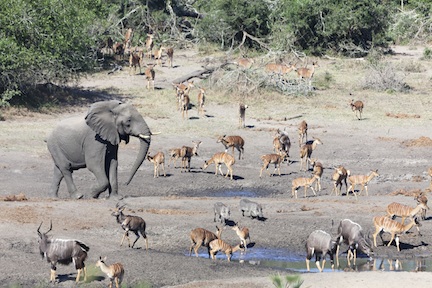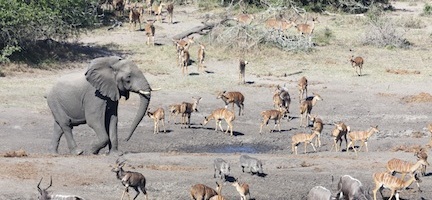
African elephant (Loxodonta africana), nyala (Tragelaphus angasii), and warthog (Phacochoerus africanus) gathering at a waterhole at Tembe Elephant Park, which is a protected area part of the Maputaland Pondoland Albany global biodiversity hotspot. (Credit: Enrico Di Minin)
A new study uses models to show that international collaboration is critically needed to prevent catastrophic habitat loss for some of the world’s most threatened species.
The authors analyzed the distribution of almost 25,000 threatened species across the world and found that expanding the global protected area network to cover 17% of the world’s land area by 2020 could triple the average protection of species ranges and ecological regions. On the other hand, if the current trend of habitat loss persist until 2040, the authors find that it will be unfeasible to maintain current levels of protection, resulting in range losses of more than 50% for over 1,000 threatened species.
Original research paper published in Nature on November 14, 2014.
Names and affiliations of selected authors

